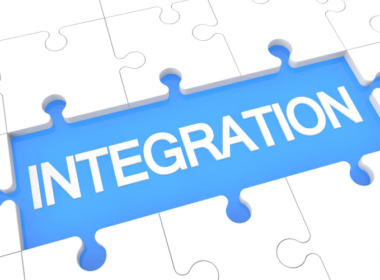Design innovation, at its emphatic best, is a generic idea, yet much too obvious in scope and applicability. To design is to innovate, and to innovate is to set an actionable blueprint for design. So, in all clarity, it is perhaps more conducive to claim the concept as an intersection of thoughts, rather than being linear.
A whole world of ideation comes to life in design thinking, unlimited in dynamics. Diverse inputs, such as taste, empathy, and creativity must be duly accounted for in interpreting design innovation.
A design problem may appear complex, and it is the job of the designer to make sense of it down to tangible practice. The intersecting dynamics essentially consist of iterative computational thinking, made to be real by maker culture. Furthermore, the feasibility of business is a vital criterion as to how far or how diverse will the design encompass.
These aspects are brought together by a complex streamlined workflow, unique to organizations. The core challenge, as it is, remains to develop human-centered offerings, taking into account all practical aspects such as the desirability, viability, and possibility of the design. The journey from ideation to reality isn’t linear. Point A through Point B must be connected via an oscillating process of ideas and prototypes until the design is finalized.
The Foundation and Goals of Design Innovation
The complexity of design innovation stems from the fact that the human qualities implied in the process are non-quantifiable. For the sake of simplicity, these qualities, such as empathy, arts appreciation, and creativity can be identified as the ‘thought matrix.’ This matrix forms the foundation of the design in process, attributing direction and purpose to it.
The problems implied in design resolution are essentially humane, although the end purpose is to set up a workable business process. Even there, at the culmination of the design, the human-centered ideation remains paramount.
For example, the happiness of using a new design may not be quantifiable, but it is still the bedrock idea that the designer intends to achieve. In other words, the basic purpose of design thinking is to derive a plausible UX where the end-user recounts the design as a satisfactory experience.
In a broader perspective, the process implies an evolutionary principle, to resolve a continuing predicament, and replace that with the idea of sustaining life. The end design must be useful and contributive to the elusive happiness, objectified by an idea whose time has come. The more successful a design is, the more pleasant the design experience.
Principles of Design Innovation
The principles of design thinking serve as a guide throughout the creative process, shaping the methods used and promoting best practices. These principles encourage designers, engineers, and other professionals to keep the needs of users and stakeholders at the forefront, pushing them to develop innovative solutions that truly make a difference.
By internalizing human-centered design as a mindset, professionals across disciplines can create products, services, and systems that are not just functional, but truly meaningful. The disciplines of design innovation concur to the extent of interpreting complex problems from a human perspective. To achieve this, the DI process involves collaboration, creativity, and inputs from diverse angles, converging to the final result.
Purposefulness is yet another bedrock principle of the DI process, wherein a product, stemming from an idea, must serve the purpose of enriching the UX implied. Enrichment is understood as an experience that encourages the end user to use the design. Competitive analysis of specific problems aids the DI team in identifying the gaps in the thought process that must be attributed to the design.
Such intentionality of the design is driven inherently by principles of empathy, persistence, and understanding of problems from a human perspective. The DI process is essentially iterative, driven to completion by a set of prototypes, the next set improved over the previous idea. A refining of the ideas eventually aids in achieving the ideal.
The Process of Design Innovation
Proof of Concept (POC)
A proof of concept (POC) serves as an important first step in bringing an idea to life. By creating a preliminary model, developers can evaluate the feasibility of a concept under real-world conditions. Rather than a polished product, a POC focuses on showcasing the core functionality and validating the basic premise.
This allows teams to gather crucial feedback and data to inform the direction of a project before major investments are made. Though rudimentary, POCs enable innovators to test assumptions, manage risks, and begin to transform visions into viable solutions. With a thoughtful POC, promising concepts can evolve from notion to reality.
Proof of Value (POV)
While a proof of concept focuses primarily on the technical viability of a solution, a proof of value takes a more business-oriented approach. It aims to quantify the tangible benefits a technology can offer an organization or its users. Rather than simply evaluating whether something can work on a technical level, a proof of value seeks to demonstrate how it can drive real improvements.
By testing the solution in real-world scenarios, the goal is to measure concrete metrics like increased efficiency, cost savings, enhanced productivity or, other advantages that impact the bottom line. The ultimate purpose is to showcase the business value the design can unlock, not just its functionality. By providing compelling evidence of benefits to the company or end-users, a successful proof of value justifies further investment and broader adoption. In essence, it moves the conversation from “Can it work?” to “Will it work for us?”
Proof of Market (POM)
Once the POV and POC are idealized, the DI process looks to deploy whether a prototype would be a market fit. By interpreting the competitive dynamics of a product in real-world market conditions, a POM is derived and justified by real-time data. A projection of the product in terms of mass production and increase in revenue is created by testing a limited set of finalized prototypes.
Unlike non-quantifiable principles implied in DI, the POM is essentially measurable and concurrent with other aspects such as the POC and the POV. The methods of obtaining a POM may differ, but essentially, all methodologies point to market testing of the product in a limited scope. This initial limited scope is quantified as a unit of success, and multiplied with mass production numbers, a definitive value of market success can be achieved.
Proof of Impact (POI)
It is essential to understand that none of the aspects of a DI process are standalone, as they continually intersect with one another. A POC is required to generate a POV, and a POM effectively combines the two to create a verifiable index of market success. In finalizing the DI process, a Proof of Impact is also generated which demonstrates the mindful impact of the DI culmination via a subsection of market analysis.
Impact is closely correlated with value, but takes a deeper connotation in explaining the way a value-based analysis will change the market conditions for the best. The POI is disruptive, as it aims to create a data model for non-quantifiable qualities, and explains the impact of the product from the UX perspective.
Design Innovation Methodologies and Frameworks
While applying DI principles, it is important to devise a systemic thinking process. A haphazard method of DI is not intended to achieve a conclusive User Experience. Thereby, organizations need to develop a planned approach to bringing the design to the table and working on it, before finalizing the end result. Herein, is also the critical importance of setting a deadline for the process to accomplish.
However, innovators often face an unprecedented hurdle, in the name of limitations of human-centered approaches of a design. Traditional corporate structures, in their emphasis on data and perfected mechanisms, often fail to incorporate the human element in design principles. This hurdle is overcome by explaining UX from an effective humane angle and setting up a blueprint to achieve the ideal.
To achieve this, designers and innovators must incorporate the real-world value of human principles. For example, how far will empathy achieve in proving the justifiability of a design? How much optimism can be derived from the success of a POV presentation? These qualities are quantified by market research, asking end users critical questions under tested market conditions. How happy are you using this product? The user is asked to grade it on a scale of 1 to 5, or on humanistic ideals. These include the gradation of a product experience from ‘poor’ to ‘average’, to ‘satisfied’, and ‘very satisfied’.
Similar questions measure how likely is the end user to recommend a product to others or how likely is the end user is to use the product (or the implied service) repeatedly. Activating this blend of process, mindset, and tools, delivers essential feedback, critical for the success of a DI process.
Double Diamond Design Framework
The Double Diamond Design Framework developed by the Design Council is by far, one of the most effective models of effective DI. The framework has four definitive aspects, namely Discover, Define, Design, and Deliver, connected non-linearly in an iterative model. The first two aspects, Discover and Define, emphasize the need for divergent thinking, or the outward flow of new ideas in bringing the design to the table.
The Discover and Define aspects are correlated and co-ideated. In this phase, the DI team identifies the potential gaps in the UX for a perceived design and brings new ideas to the table. Basic prototypes are devised via an oscillating process until the divergent thought process is ready to converge.
The second half of the double diamond, namely Design and Deliver emphasizes convergent thinking in finalizing the practical design. The ideation is finalized and designers start to work on them, to develop actionable prototypes in a collaborative approach. Eventually, the design is delivered, complete with its POV and POI.
The POC is predominantly utilized in convergent thinking, along with some extent of POM and POV. The POI is most often utilized in the Deliver phase. However, along with POI, the other presentations are also implied to explain the full impact of the design. Even after the design is completed, market research can imply the need for further application of the Double Diamond methodologies to solve problems that were previously unaddressed.
The Role of Technical and Business Integration
What is the ultimate objective of Design Innovation? To put it simply, a successful DI project effectively creates a human-centric experience that is widely acceptable and hence generates an increase in revenue. Achieving this would require the curation of meaningful brand relationships with the end user. Again, where there is ‘meaning,’ human-centric measures such as empathy, optimism, and usability come into context.
It is not a question of how a design will be achieved in its lifecycle. The ‘how’ is quantified by the design process outlined above. Instead, it is a question of ‘how much’ will the design achieve for the end user. The more feasible (and profitable) the design is in the UX context, the better it is geared to be profitable for the organization orchestrating it. User engagement is derived by successfully leveraging and evolving internal capabilities, processes, and channels meant for the purpose.
In all ways, technical integration is the key to successful DI. Herein, is the need for diverse disciplines such as mechanical and electrical engineering. Modern technologies such as Artificial Intelligence and Cloud Computing are also accounted for in devising the technological base of a successful design campaign.
Business Model Canvas by Strategyzer
The business model canvas by Strategyzer is an effective case study of how the design process can be geared to revenue increase. The business model canvas employs nine distinctive parameters to achieve this purpose. These parameters are stretched on a ‘canvas’ and attributed accordingly in an iterative process.
- The value proposition refers to what the design is offering to the market.
- The client segments addressed in the POV
- Communication and Distribution channels available for the value proposition to deliver results
- A measure of meaningful client relationships
- Key resources mandated to make the value proposition a reality
- The activities outlined for the value proposition to be justified
- Identifying the partners in achieving this purpose
- The revenue models assigned
- The profit structure derived from the model
Examples of Design Innovation
Overcast with ‘Smart Speed’ Feature for Podcast Listening
While Pocket Casts offers a “Trim Silence” feature, the Smart Speed technology took podcast playback optimization to the next level. Through advanced audio analysis, Smart Speed identifies silent gaps and pauses in speech. It then seamlessly adjusts the playback speed in real time, shortening silences while maintaining a natural cadence.
The result is an enhanced listening experience that retains the original voices and inflections, yet condenses each episode by reducing dead air. With Smart Speed, the end user can streamline your podcast time without compromising on audio quality.
Mail Pilot: Reimagined Email Interaction Through Innovative Design
Mail Pilot reimagined email interaction with the introduction of a ‘calm inbox.’ A calm inbox is a system for managing your email inbox in which you establish (and communicate widely) specific times when you will respond to messages. With this approach, your colleagues are aware of when you are available. Implementing a calm inbox provides structure around email communication by setting clear expectations for response times.
This allows you to focus your attention fully during designated working periods rather than constantly checking and responding to emails. Overall, a calm inbox system promotes organization, focus, and effective communication.
Coca-Cola Bottle: Design Innovation for Brand Distinction
The contour shape of the Coca-Cola bottle is a classic example of design innovation in practice. The design came into existence when the company embarked on a design initiative to develop a bottle so unique that it would be identifiable even when the bottle was lying broken on the ground. The ‘contour bottle’ was patented in 1916, and has ever since been a benchmark of design innovation.
The bottle featured an elegant curved form with delicate vertical ridges and a sculpted profile evocative of the iconic Coca-Cola emblem. Its graceful contours and subtle ornamentation lent an air of refinement, perfectly suiting the dignified aura imparted by its classic design. The shapely vessel struck a sophisticated chord, its understated yet recognizable silhouette speaking to the brand’s storied heritage and timeless appeal.
The iPhone X Demonstrating the Synergy between Technology and Design
The iPhone X was a pathbreaker in smartphone tech, both in terms of advanced features and an elegant new design. The rounded corners were the benchmark of a new type of smartphone, along with the use of surgical-grade steel at the cuffs. By offering a wider screen that was described as ‘beautiful’ by users, the iPhone X achieved design sensibilities yet unexplored in the smartphone world.
The Continuous Journey of Design Innovation
Design Innovation is meant to evolve. The evolution of DI as a principle implies the need for a deeper understanding of human nature as to why would someone find a design feasible. Along with this, new business models are being experimented on the lines of already existing systems to make design even more profitable.
The elaborate process requires a comprehensive and holistic outlook of design in a sustainable setting. Newer ideas, such as eco-friendly designs, are being experimented with success. As companies tend to become more human-centric, and as humanity becomes more consciousness-oriented, newer principles are taking shape in the design world. The process, as always, is inherently cyclical, in all its aspects, thereby creating an open loop (the infinity loop) for improvement.








